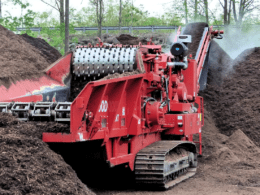Are you tired of tripping over rocks in your yard or garden? Do you worry about the damage they could cause to your gardening tools or interfere with root growth? You’re not alone.
Many homeowners prefer a more manageable and enjoyable outdoor space, free of pesky rocks. In this article, we’ll explore the best ways to remove rocks from your yard or soil, so you can rock your yard without any worries.
Using hand tools or machinery, you can remove rocks from your yard or garden and enjoy a more peaceful outdoor space. But removing rocks isn’t just about aesthetics. It can also prevent potential hazards and injuries from stumbling over rocks or damaging your tools.
So, whether you’re a seasoned gardener or just starting out, keep reading to learn the most effective methods and tips for rock removal. With our help, you’ll be able to create a safer and more enjoyable outdoor environment for you and your family.
Quick Takeaways
- Rocks in soil have both benefits and issues, and the environmental impact must be considered.
- Hand tools like steel lawn rakes and rock screening rakes are great for removing smaller rocks, while machines like lawn tractor attachments are more suitable for larger rocks.
- Techniques for effective rock removal include rock picking, preparing the soil, using a rototiller with appropriate teeth spacing, and raking or sifting loose soil.
- Following manufacturer guidelines for equipment maintenance and wearing protective gear are important for safe and effective rock removal.
Benefits and Issues
You may already know that rocks in soil have benefits like reducing erosion and regulating soil temperature. They can also be an inexpensive and permanent solution for soil drainage problems, and they help keep hills and berms in place. However, rocks also have some issues that can cause problems for your yard. They can deter root growth, raise soil temperature, and tear up lawnmower blades. Additionally, they can cause aggravating problems with gardening tools.
When it comes to the environmental impact of rocks in soil, the benefits and issues must be weighed. While rocks do have benefits, the issues can outweigh them, especially if you want to grow a healthy garden or lawn. Root growth is essential for healthy plants, and rocks can hinder that growth. Additionally, gardening tools can get damaged by rocks, which can be frustrating and costly.
In the end, it’s up to you to decide which side wins for yard rocks.
Hand Tools and Machines
Using hand tools and machines is essential for effective rock removal from the soil in your yard. Hand tools, such as steel lawn rakes, rock screening rakes, rock sifting shovels, and landscaping pry bars, are great for removing smaller rocks or rocks of irregular sizes.
On the other hand, machines like lawn tractor attachments, bucket attachments, and skid-steer tractors with a bucket or claw attachment, are more suitable for removing larger rocks or a greater amount of rocks.
When comparing hand tools and machines for rock removal, it’s important to consider the cost and safety precautions. Hand tools are generally less expensive and easier to use, but they require more physical effort and can cause strain or injury over time.
Machines, while more expensive, can save time and energy, but they require proper maintenance and safety precautions to avoid accidents. It’s important to always wear protective gear when operating rock removal equipment and to follow manufacturer guidelines for maintenance and operation.
Effective Methods and Tips
To effectively remove rocks from soil, consider implementing these tips and methods.
First, use a technique called rock picking. This involves manually picking up rocks and placing them in a bucket or wheelbarrow. It may be time-consuming, but it’s effective for smaller rocks.
Additionally, prepare the soil before removing rocks. This means tilling the soil to loosen it up and make it easier to remove rocks.
Another effective method is using a rototiller for surface removal of smaller-size stones. Be sure to adjust the rototiller’s teeth to the appropriate space between them to avoid jamming.
Raking or sifting loose soil is also helpful for removing rocks. For extensive rock-clearing jobs, consider using an electric-powered sifter.
Lastly, to avoid physical strain, rent or purchase attachments for a lawn tractor.
With these tips and methods, you can effectively remove rocks from your yard and prepare your soil for planting.
Frequently Asked Questions
Are there any natural methods for removing rocks from soil?
Rock picking is a natural method for removing rocks from soil. It involves manually picking up rocks by hand and disposing of them. Composting is also useful as it breaks down smaller rocks over time, improving soil quality.
How do rocks affect the pH level of soil?
To neutralize soil pH impacted by rocks, add agricultural lime. Rocks can raise soil pH and deter root growth, affecting plant growth. Test soil pH before adding lime and follow package instructions.
What is the best way to dispose of the rocks that have been removed?
After removing rocks from your yard, you can recycle them by using them as a base for a walkway or donating them to a local landscaping company. This will prevent them from ending up in a landfill and promote sustainability.
Can rock removal cause damage to underground pipes or cables?
When removing rocks from your yard, it’s important to prevent damage to any underground pipes or cables. Before starting, locate any utilities and consider excavation alternatives that won’t disrupt them. Safety first!
How can one prevent rocks from reappearing in the soil after removal?
Preventing rocks from reappearing in soil after removal can be done with natural methods. Cover areas with mulch or ground covers, use compost, or plant cover crops to prevent weeds and rocks from growing back.









